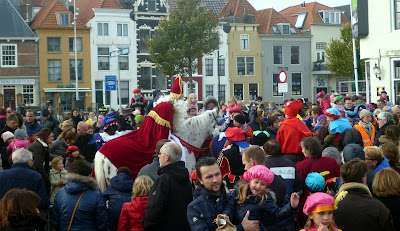When we left home aboard Taipan in 2004 we didn't have a water maker. We had a washing machine, albeit a twin tub wash spin arrangement which enables water recycling and therefor uses much less water than a conventional Automatic Machine. We saved the washing day until we were in a marina or within dingy access of a suitable water supply. Our onboard water capacity was 600 litres stored in one tank.
For 2 years we traveled extensively around Australia and were rarely in marinas. We filled the water tank when we topped up the Diesel tanks. This system worked well for us. The boat is our home and we expect to function within it, as much as possible, as we would in a house. Cruising doesn't have to be camping. We don't stint on electricity or water and we expect to enjoy almost the same comfort and convenience as our land locked friends.
In 2006 we decided to go offshore. Our first foreign country was Indonesia. The bad press on the water situation in Asia generally, had us reconsidering our options. A Spectra Newport 400 Automatic water maker was installed and away we went.
 |
| Trusty old Twin Tub removed. |
Throughout Asia we regularly topped up our friends water tanks from our boat supply. The Spectra was not totally trouble free. We had a major failure of the Clark Pump in 2009. An expensive and heavy part which had to be returned to Spectra Asia for repair. This repair went awry when the agent died. It got very messy because our pump unit went missing in the resultant panic as people grabbed what they thought were their parts from his workshop. We ended up with a very old unit which didn't fit our system. Spectra were excellent. They had a new one on the shelf and gave it to us as a replacement and they instructed another agent in Phuket to supply any parts we needed to get the unit operational. This was done and we were soon making water again.
In 2009 we removed the Twin Tub and installed a 5kg domestic front loading Automatic Washer. We also removed the single 600 litre water tank and replaced it with 2 tanks of 300 litres each. This has worked very well for us in combination with the water maker since then.
Several times during the past 10 years a feed pump has failed. Spectra acknowledged that this part was not satisfactory for the purpose and made it possible to, for a small fee, return the broken unit and they replaced it with a refurbished one. This system worked well and we were very confident with the machine and with Spectra's service ethics.
Their technicians were always available to talk on the phone and willing to spend what ever time it took to nurse us through any issues we may have had.
 |
| And the Automatic is installed. |
In recent times the company has been sold. The new service attitude is very different. They have "moved on" and now no longer service and replace the feed pumps. A new improved feed pump is US$1500.
The last pump we sent to a different manufacturer for refurbishment, at Spectra's advice, cost us $590.US It replaced a pump which failed after just 8 months.
There are many water maker systems in the market place now and we know many happy boaters with less complicated and equally if not more efficient units for a lot less initial outlay. We know boaters who have switched from Spectra to other units and are very happy. Sadly, the industry had a great company started by a cruiser who fully comprehended the necessity for service and was able and willing to expedite the repair of a water maker in even the most remote places.
Our unit is 10 years old. It has made a total of 110,000 litres to date at an approximate cost for repairs and consumables of 6.4c per litre. This accounts for repairs, replacement parts, filters, and an allowance for electricity. The cost of our water would rise to 14c per litre if we allow a reasonable amount for depreciation.
In hindsight a cheaper and smaller capacity machine which ran off solar panels would significantly reduce our costs and still satisfy our water requirements.
In hindsight a cheaper and smaller capacity machine which ran off solar panels would significantly reduce our costs and still satisfy our water requirements.









